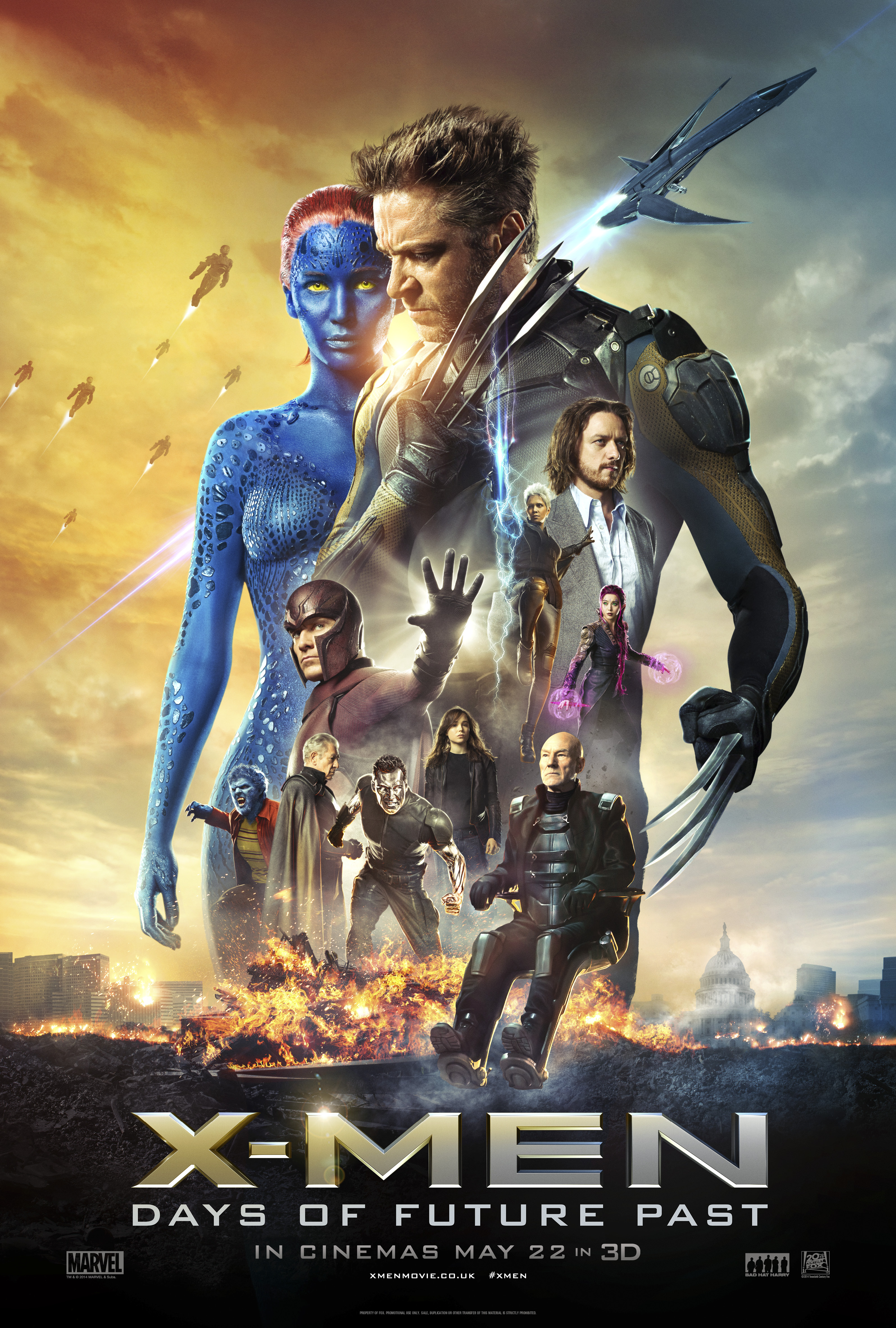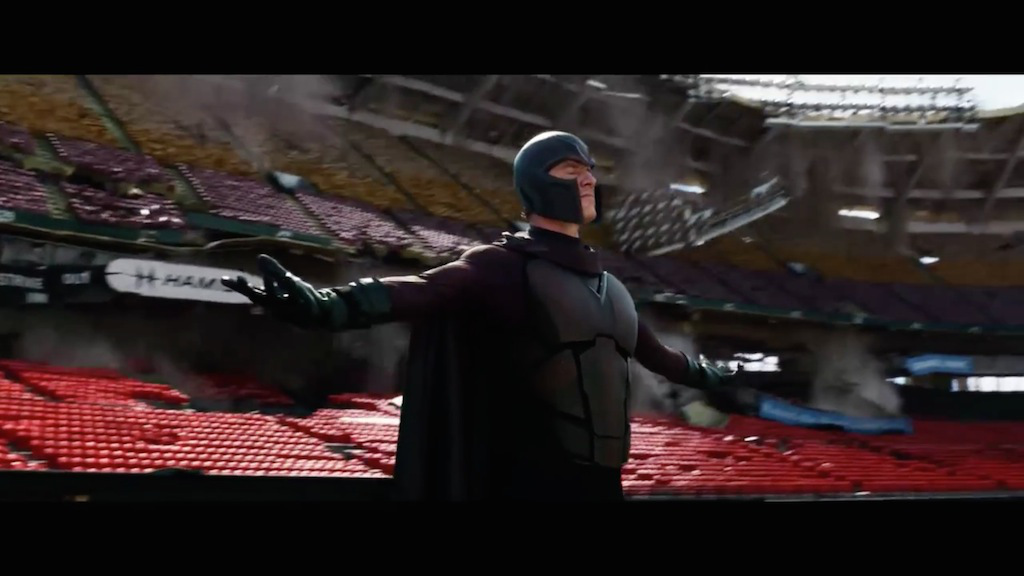

You're at a critical juncture Marvel. Nip those problems in the bud now.
Foreshadowing the Showstopper

While thematically linking 3 acts of a film focused on
individual elements of the story’s thesis has been shown to be one of the more
elegant circumventions of the problematic third act climax of superhero films,
there is another approach that is often overlooked.
A genre with so many Hollywood fingers crawling inside of it
seems to be unfortunately obligated to expectation pandering to the masses,
requiring a peppering of visual spectacle for trailer and advertising purposes.
This is a shame because it hinders the narrative potential of the genre at
large due to the inability to withhold some of the most creative visuals in
order to go out on a bang.
Ironically enough, the best examples of this style of
execution in recent history are MCU properties.
While Ant-Man is not without its own set of flaws
symptomatic of the MCU’s increasingly blockbuster nature, its decision to focus
on heist storytelling tropes and detail all of the quirks and twists that the
superhero genre is capable of providing it with made not only for a more unique
entry of the franchise but provided a climax with elements seeded and developed
throughout the events preceding its occurrence, leading to a more organic
conclusion to heighten the satisfaction of its visual creativity.
Daredevil, being a television series rather than a film, may
be less applicable to the discussion at hand but its cinematic tone and pacing
nevertheless convey something of a less traditional cinematic superhero story
than that of its theatrically produced counterparts; namely, revolving every
plot point around an element of the mystery that comes to a head in the last
third to be resolved and rewarding the investment and patience of the audience
with the confrontation of its central opposing characters and the revelation of
the iconic costume. Not that it can’t still serve as a sample of how to do
things better despite a stronger story structure (would it have been so hard to
actually depict the progress at work for the “work in progress” costume).
Beyond the MCU, Superman 2, both Richard Donner and Lester’s
cut demonstrate the satisfactory results of such a tactic as well. Special
effects rear their work to display Superman doing all of the mundane duties of
protecting citizens as trouble arrives without pushing the visual bar, in order
to instead focus on the drama of Clark Kent’s life and relationship with Lois
Lane, which is impacted by his superhuman status. As such, the focus is shifted
from heroic dangers to the conflict rising between his choice of enjoying the
life that he has earned or embracing the life that his people need him to lead,
culminating in the first American cinematic big budget superhero brawl between
him and Zod’s army (which didn’t require an entire city’s destruction. Just
sayin’).
Although films like The Avengers would seem to hint that
Marvel is in favor of such a tactic, Phase 2 has unfortunately been saddled
with growing pains that seem to have resulted in the studio forgetting that the
investment audiences have with this world is stemming from how its characters
live and engage more than what pretty maneuver they can pull to fight the bad
guy.
Save the shiny effects for the moments that matter. The most
important piece of a superhero narrative will always be its central character’s
presence. Don’t use the budget as a distraction that wears thin. make it count where it's needed.
Crisis of Infinite Ideologies

As wonderful as comics, television, and other forms of
episodic media are, the nature of film’s increased scope and potential grandeur
along with the intimacy of its character portrayals reliant on the subtleties of
acting performance do make it harder to follow the conventions of its source material, such as frequently rotating antagonists or upping the ante on story
relevant visual splendor.
Too often, these films are beginning to fall into the trap
of boiling what makes them distinct down to which villain of the week gets to
star on the poster; Iron Man 2, Thor: The Dark World, both Amazing Spider-Man
films, etc. Even “Age of Ultron,” for all of its grand ambitions in
storytelling boiled down to smashing cannon fodder to take out the movie’s admittedly
unique and impressive antagonist, rather than speaking to the core of what the
movie and its concept is truly about.
My lavish praise for “Days of Future Past” stemmed not just
from a great portrayal of likeable characters engaged in a drama framed by
events that were compelling to watch unfold but additionally came from my
admiration of how well it managed to spin every piece of its story into support
for the overarching themes of its series. The questions raised regarding how we
face our own destiny blend wonderfully with a franchise that has been about
fighting prejudice in the name of seeking a better tomorrow which culminate in
Magneto’s active and vocal vindication of humanity’s fear of mutants juxtaposed
with Mystique’s final decision to save a man that she would have been fully
justified to murder.
The true antagonist of the film wasn’t Magneto or the
sentinels but the very human concept of fearing and hating what we don’t
understand, with the conflict’s resolution for the better only coming about
after society takes the first step to overcoming that fear.
Across the entirety of Phase 2, the only film to come even
close to executing this properly was “Captain America: The Winter Soldier,”
which unfortunately made the mistake of watering down its potential impact by
splitting the perspective between too many of its side characters.
Perhaps “Civil War” will do a better job of balancing its
more human themes with the flash and spectacle of its high budget but I can
only pray that Marvel truly takes to heart that one of the best superhero movies
of the last 5 years or so was made by the studio that brought us “Fantastic
Four.”
If that doesn’t light a fire under their belly to shape it
up, I don’t know what will.
No comments:
Post a Comment